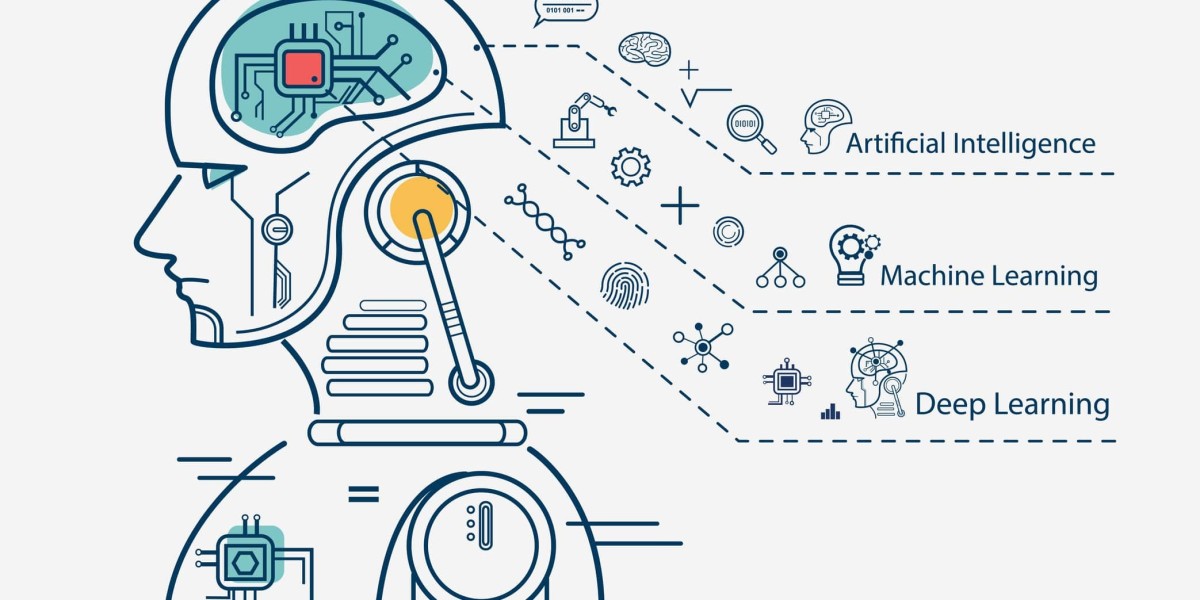Deep learning has emerged as a transformative force in various industries, leveraging artificial neural networks to tackle complex problems. In recent years, its popularity has skyrocketed due to its ability to handle massive datasets and extract meaningful insights.
Deep learning algorithms have become indispensable tools in fields such as healthcare, finance, marketing, and more. By mimicking the structure and function of the human brain, these algorithms have revolutionized the way we approach tasks that were once considered beyond the capabilities of machines.
Deep learning isn’t just a buzzword; it’s a powerful technology that drives innovation and drives progress across multiple sectors. Its applications range from image and speech recognition to natural language processing and autonomous driving.
By harnessing the computational power of neural networks, deep learning algorithms can process vast amounts of data and learn complex patterns, enabling machines to make intelligent decisions and predictions.
Defining Deep Learning
Deep learning employs artificial neural networks inspired by the human brain’s structure and function. At its core, it’s about building algorithms that can learn from data and improve over time. The key to its success lies in the architecture of neural networks, which consists of interconnected nodes arranged in layers.
These nodes, also known as neurons, receive input signals, process them through weighted connections, and produce output signals. By stacking multiple layers of neurons, deep learning models can learn hierarchical representations of data, allowing them to perform increasingly complex tasks.
The rise of deep learning has been fueled by advances in hardware, algorithms, and data availability. With the advent of powerful GPUs and specialized hardware accelerators, training deep neural networks has become more efficient and scalable.
Additionally, researchers have developed novel algorithms and optimization techniques that have significantly improved the performance of deep learning models. Moreover, the proliferation of big data has provided deep learning algorithms with ample training examples, enabling them to learn from diverse and heterogeneous datasets.
Neural Networks
Neural networks, the building blocks of deep learning, comprise interconnected nodes organized in layers: input, hidden, and output. Each node in the input layer represents a feature or attribute of the input data, while nodes in the hidden layers perform computations to extract higher-level features.
Finally, the output layer produces the final output or prediction based on the learned features. The strength of neural networks lies in their ability to automatically learn complex patterns and representations from raw data, without the need for manual feature engineering.
The architecture of neural networks plays a crucial role in their performance and capabilities. They consist of multiple layers, including convolutional layers, pooling layers, and fully connected layers, that extract hierarchical features from input images.
Recurrent Neural Networks (RNNs), on the other hand, are well-suited for sequential data, such as time series or text. They have connections that form directed cycles, allowing them to retain information over time and capture temporal dependencies.
Deep Learning Algorithms
Deep learning algorithms harness neural networks to extract meaningful insights from data. These algorithms undergo extensive training to decipher complex patterns and make informed decisions.
The training process involves feeding large amounts of labeled data into the neural network, adjusting the network’s parameters iteratively to minimize the difference between the predicted and actual outputs. Through this process, the neural network learns to generalize from the training data and make accurate predictions on unseen data.
The success of deep learning algorithms can be attributed to their ability to automatically learn representations of data from raw inputs. Unlike traditional machine learning algorithms, which rely on handcrafted features, deep learning algorithms learn hierarchical representations of data through the successive transformation of input data across multiple layers.
This end-to-end learning approach enables deep learning models to capture intricate patterns and relationships in data, leading to state-of-the-art performance in various tasks, such as image recognition, speech recognition, and natural language processing.
Types of Deep Learning Algorithms
Deep learning encompasses a wide range of algorithms, each tailored to specific types of data and tasks. Convolutional Neural Networks (CNNs), for instance, are widely used for image processing and computer vision tasks.
They leverage convolutional layers to extract spatial hierarchies of features from input images, making them well-suited for tasks such as object detection, image classification, and image segmentation.
Recurrent Neural Networks (RNNs), on the other hand, are ideal for sequential data, such as time series or text. They have recurrent connections that allow them to capture temporal dependencies and generate sequential outputs.
Other types of deep learning algorithms include Generative Adversarial Networks (GANs), which are used for generating synthetic data samples; Radial Basis Function Networks (RBFNs), which are used for classification and regression tasks; and Deep Belief Networks (DBNs), which are used for unsupervised learning tasks such as dimensionality reduction and feature learning.
Each type of deep learning algorithm has its strengths and weaknesses, and choosing the right algorithm for a given task depends on factors such as the nature of the data.
Conclusion
Deep learning algorithms represent a paradigm shift in problem-solving across industries. Understanding their nuances and applications is essential for leveraging the full potential of artificial intelligence in the modern world. By harnessing the power of neural networks and big data, deep learning algorithms have enabled remarkable advancements in fields such as healthcare, finance, autonomous driving, and more. As the field continues to evolve, deep learning algorithms will play an increasingly prominent role in shaping the future of technology and innovation.








